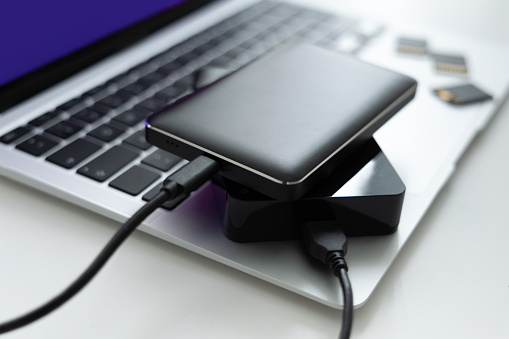The information you seek on how to boot from a USB drive can be found here. We understand the fear that can come with jumping into something new without any preparation or experience. Worry not, though! We are here to help you in any way we can. Read on to learn the right and wrong ways to enable a USB drive to boot. From basic how-on to’s making the drive itself to advice on keeping your files safe, we have you covered. The time to start is now.
A USB flash drive that can boot an operating system is called a “bootable USB drive.”
Follow these instructions if you need assistance creating a bootable USB drive:
In order to install a new operating system on a computer, the user must have access to the actual installation media as well as a bootable device. A DVD or USB flash drive can be used for the former, while your hard drive or, more commonly these days, a USB flash drive can be used for the latter. For those who want to create their own bootable media, all you need is the Windows 10 ISO file and a USB flash drive with at least 4 GB of free space, and you can use Microsoft’s Media Creation Tool for this.
How to Create a Bootable USB Flash Drive
Media created with the Media Creation Tool is the preferred method for creating bootable Windows 10 media, but there are other methods. You can also use the third-party program Rufus to create Windows 10 bootable media. Rufus is a more efficient and trustworthy alternative to Microsoft’s program, but it cannot read dual-layer DVDs. This means that if you want to create a dual-layer DVD that can be booted from, you will need to use Microsoft’s tool.
Use of Rufus for Making Bootable Media
The most recent build of Rufus can be obtained by visiting https://rufus.akeo.ie/ and clicking “Download.”
It’s as easy as plugging the USB drive into your computer and starting Rufus.
Check the box next to “Create a bootable disk using,” and then select the USB drive you want to use.
Creating a bootable USB flash drive.
Some things need to be taken into account before you can make your USB drive bootable. First, make sure you have the necessary programs installed on your computer. Use this software to create a bootable drive for your computer.
You can now format your USB drive after installing the necessary software. This is important because you can’t afford to lose any data due to forgetfulness. After the drive has been formatted, you can use the program to create a bootable image.
As soon as the bootable image is made, it must be copied to the USB drive. You must exercise caution, as a misstep could prevent your computer from starting up normally.
The image can be copied to a USB drive, and then the computer can be started from the removable media. There shouldn’t be any problems now, and your computer should boot normally from the USB drive.
Which Software Should I Use?
To create a USB drive that can be booted from, you’ll need dedicated software. Many programs claim to be able to do this, but not all of them are created equal. Better and worse choices exist, as do free and paid alternatives.
If you need a no-cost option, the open-source program Rufus can create bootable USB drives. UNetbootin is a free alternative to Rufus that’s both more reliable and more feature-rich.
If you don’t mind shelling out a few bucks, paid options like PowerISO and Nero Burning ROM are worth looking into. Each of these applications is well-known for its superior performance and is packed with useful features. PowerISO is the best software for creating bootable ISO images.
It’s important to make sure the USB drive software is compatible with the computer’s OS. It won’t be able to create a bootable USB drive unless you do that.
Creating a bootable USB flash drive.
Making a USB drive bootable requires a few precautions. I recommend starting with a USB drive that has a proven track record. As a second step, format the drive with the FAT32 file system. Finally, third, use a reliable USB bootable software program. Finally, make sure your computer is set up for peak performance by going into the BIOS and double-checking all of the options. Your USB drive needs to be tried out before you put any serious data on it.
In order to create a bootable USB drive, consider the following:
At the outset, check that the USB drive you’re using is a reliable and trustworthy one. When shopping for a USB flash drive, it’s important to go with a reputable company.
It is recommended that you use the FAT32 file system when formatting the drive. Most USB-bootable software requires this particular file format.
Finally, use a trustworthy USB bootable software utility. Numerous open-source tools are available online for making a USB drive bootable. Go with the one that has been used successfully by many people before you.
Verify that your computer’s BIOS configuration is accurate. The computer’s BIOS needs to be configured in a specific way before it will recognize the bootable USB drive.
Verify that your USB drive is operational before using it. Before putting the USB drive to use, it is wise to put it through a diagnostic test to ensure it is in good working order.
Make Your USB Drive Bootable the Right Way
It takes knowledge of specific steps to learn how to make a USB drive bootable. A bootable USB drive is the first step, so let’s define it. This USB drive can be used to boot the computer. This is useful whether you’re building a brand new PC from scratch or restoring an older model.
Now that we’ve defined a bootable USB drive, let’s get into the process of creating one. The USB drive must be formatted first. We recommend HPUSBFW for Windows or Disk Utility for Mac, but there are other options. Any app-specific files or device drivers should be copied over after the flash drive has been formatted. The correct ones for the OS you’re installing should be available on the manufacturer’s website.
To make use of the USB drive, boot mode must be enabled after all data has been copied over. For Windows, you can use Bootsect, and on Mac OS X, you can use the diskutil command. You can use a USB drive to install your OS of choice once it has been formatted to be bootable.
Don’t forget this when creating a USB to boot from:
Conclusion
It’s easy to move data and software between computers when you make a USB drive bootable. If you do this, your USB drive is more likely to perform as expected. It’s also possible to prevent issues during installation by making sure you have all the necessary software and hardware well in advance. If you have any questions or concerns, our support team is here to help.




